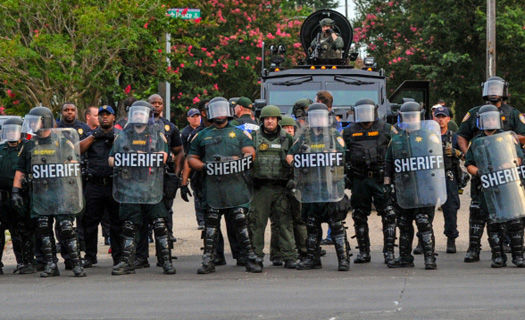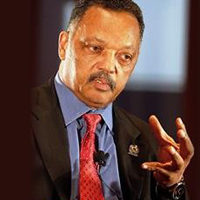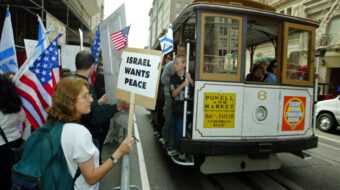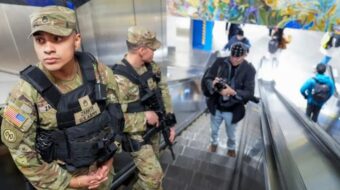
“It is more dangerous to be black in America. You’re substantially more likely to be in a situation where police don’t respect you.”
The speaker was not Barack Obama; it was former Republican House Speaker Newt Gingrich. Even a conservative firebrand like Gingrich was shaken by videos showing black men killed by police in Baton Rouge and suburban St. Paul.
Then the lone assassin in Dallas shot and killed five police officers and wounded seven more. Grief, fear, and anger spread.
The challenge now – for every concerned American – is how we react to the injustice and the violence. We know that our justice system suffers from massive and systematic racism. It is more dangerous to drive while black. African-Americans are more likely to be stopped, more likely to be searched, more likely to be arrested if stopped, more likely to be charged if arrested, and more likely to be jailed if convicted. The budget of many small towns is based upon the fines, penalties and fees largely paid for by African-American offenders. Police, state’s attorneys, and judges tend to have a shared perspective, an organizational kinship.
How do we respond? After the shootings of Philando Castile in Minneapolis and Alton Sterling in Baton Rouge – as after Ferguson, Mo. and Baltimore and more – nonviolent demonstrations spread across the country. Whites joined with blacks and Latinos and Asian-Americans to call for an end to the killings, for justice, for the recognition that Black Lives Matter. These are the tactics taught by Jesus, Gandhi, and Dr. Martin Luther King, not because they were scared of violence but because they were wise about change. Nonviolence condemns the sin, but not the sinner. It indicts the injustice by forcing recognition of our shared humanity. It summons the better angels of our character, not the bitter angers of our fears.
We must choose reconciliation over retaliation and revenge. This is a teachable moment if we are finally willing to learn that too many guns, too much injustice, and growing disparities is a lethal cocktail.
It is unfair to associate the terrorist attack in Dallas with our long struggle for peace and justice for all. This crime has endangered those who would protest nonviolently against injustice. It roused fears and spread hatred. The reactionary will use the shooter’s crimes to try to discredit the reform movement. Police across the country will be even more on guard. Violence isn’t an answer; it is sabotage.
America is scarred by what has become routine violence. There is good news, though. The murder rate is dropping. The number of police killed in the line of duty is lower in recent years than it was in earlier decades. But according to the tally of the Washington Post, 509 people have been shot by police to date in 2016, a pace similar to last year’s. (Editor’s Note: The tally at Washington Post has risen to 518 since this article was written.) And gun violence continues to take a grisly toll.
The cameras that now are everywhere have begun to expose to America the reality that people of color have known all too well. Now people of good conscience must come together and demand change. This will take multiracial coalitions, electoral mobilization, and peaceful protest.
But the camera’s eye shows us only a glimpse of the symptoms; it does not reveal the roots of the disease. The camera lens can reveal the police abuse, breaking the curtain of silence. But it does not show the roots of the problem.
The reality is that there are still two Americas. We’ve overcome legal racial segregation, but we haven’t overcome legal resource segregation in schools, jobs, contracts, investments, access to capital, technology, and deal flow. Poor African-Americans and Latinos are more likely to be crowded into impoverished neighborhoods marked by drugs and guns, by violent streets and broken schools, unemployment, and crushed hopes. Police are tasked to keep order amid the despair. It is an impossible job.
Yes, we need justice when police officers brutalize the innocent. We need more training, more cameras, more community relations, and new community forms of policing. We need to end the racial disparities in arrests, searches, sentencing, and more.
But the police will still be in an impossible position unless we get serious about making this one America, in redressing the lack of jobs, the broken schools, the shortage of affordable housing, the lack of health care and drug treatment, the shortage of parks and recreational facilities. That is why we need a White House conference on the two Americas, on racial disparity, poverty, and reconstruction. We need a plan for jobs, for rebuilding our impoverished neighborhoods, for replacing guns with books and drugs with hope. Without that, the camera lens will continue to reveal that the horrors and the crimes are continuing, and the spiral of hate and fear deepening.
Rev. Jesse Jackson is the founder and president of the Rainbow PUSH Coalition. He was a leader in the civil rights movement alongside Dr. Martin Luther King, Jr. and was twice a candidate for President of the United States.
This article originally appeared in the Chicago Sun-Times. It is reprinted here with the permission of Rainbow PUSH.
Photo: Police officers watch protesters gathering against another group of protesters in Baton Rouge, La., Sunday, July 10, 2016. | AP/Scott Clause

MOST POPULAR TODAY

High Court essentially bans demonstrations, freedom of assembly in Deep South

UN warns that Israel is still blocking humanitarian aid to Gaza


Resource wars rage in eastern Congo, but U.S. capitalism only sees investment opportunity

U.S. imperialism’s ‘ironclad’ support for Israel increases fascist danger at home






Comments